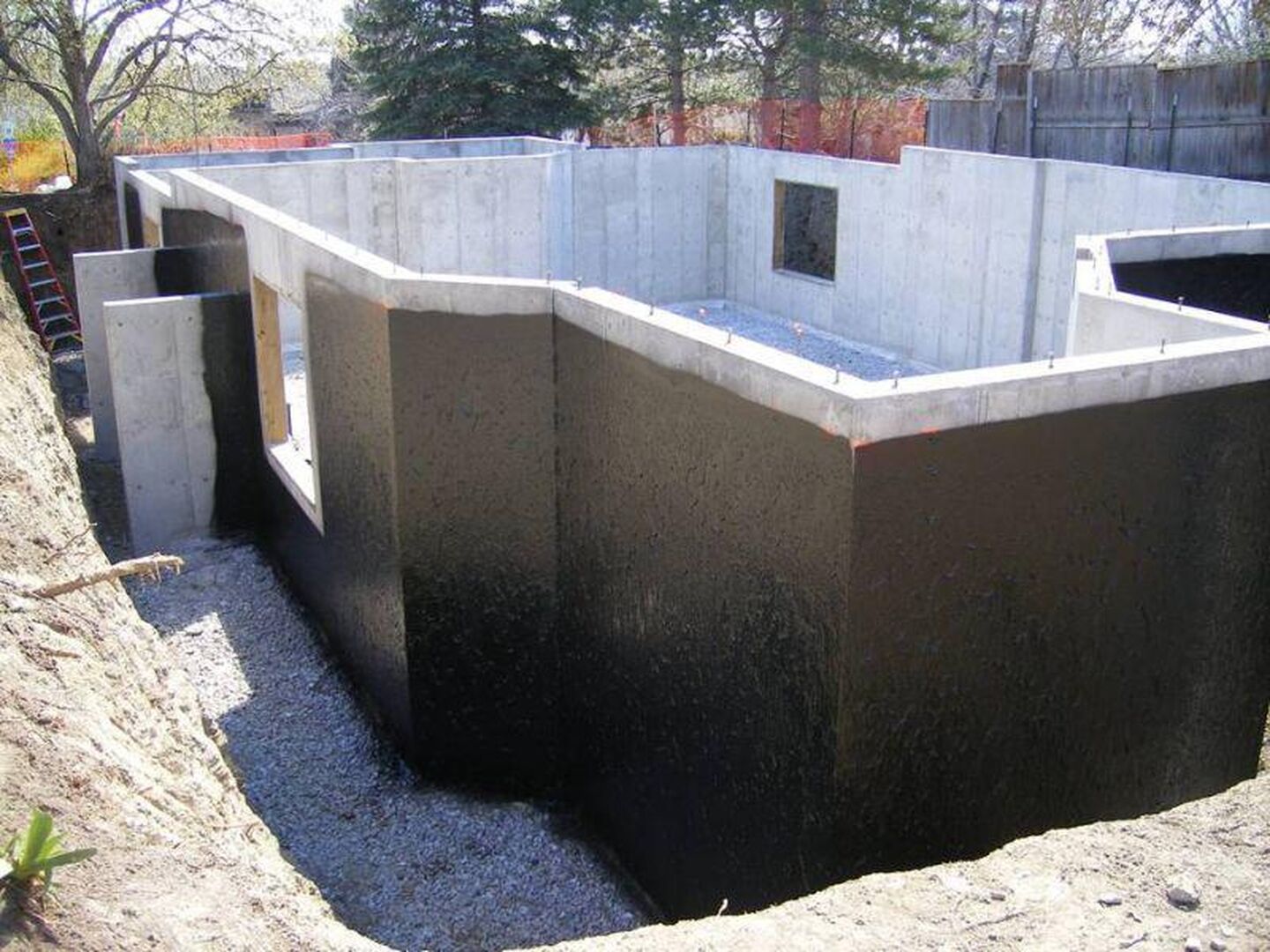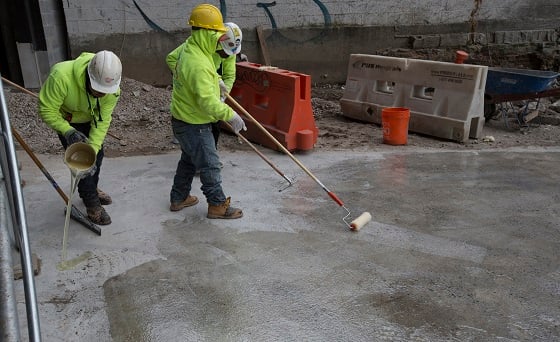The Do’s and Don’ts of Sump pump discharge drainage Omaha for Residential Properties
Why Waterproofing Is Important for Lasting Structures: a Comprehensive Evaluation
Waterproofing plays a necessary function in the longevity of frameworks. It functions as a barrier versus wetness, which can result in significant concerns like mold and mildew and degeneration. Recognizing the various waterproofing methods and their effects is vital for homeowner. The repercussions of neglecting this facet can be serious. Discovering these aspects reveals not simply the necessity of waterproofing, yet likewise its broader influence on home worth and security.
Understanding Waterproofing: Meaning and Importance
Waterproofing acts as an important obstacle versus wetness intrusion, securing frameworks from potential damages. It encompasses various methods and materials created to prevent water penetration right into buildings, making sure long life and functionality. The value of waterproofing can not be overemphasized, as it safeguards versus an array of issues, including mold and mildew development, wear and tear of products, and architectural weakening.Effective waterproofing remedies can include membranes, finishes, and sealers, each customized to particular atmospheres and architectural layouts. By creating a protective layer, these options aid keep a completely dry interior, which is important for the wellness of owners and the preservation of property value.Moreover, buying waterproofing at the building phase is significantly a lot more cost-efficient than addressing water-related issues after they arise. Understanding the principles of waterproofing is important for designers, builders, and residential or commercial property owners intending for sturdy, resilient structures that endure the test of time and environmental challenges.

The Influence of Water Damages on Structural Stability
Water damages poses considerable threats to structural integrity, mostly via the growth of mold and mildew. These microorganisms not just compromise indoor air high quality yet additionally lead to material deterioration gradually. In addition, prolonged exposure to moisture can compromise architectural parts, raising the likelihood of collapse or failure.
Mold and Mildew Growth
Moisture intrusion positions a substantial hazard to the architectural honesty of structures, leading to the proliferation of mold and mildew. These fungi prosper in moist settings, often settling in covert areas such as wall tooth cavities, under flooring, and in ceilings. Their growth not only produces unpleasant spots and undesirable odors however also contributes to a decrease in indoor air quality, positioning health risks to owners. Mold and mildew and mold can jeopardize materials like timber and drywall, bring about more wetness retention and producing a cycle of damage. Early discovery and removal are vital to stop substantial growth, underscoring the need of efficient waterproofing steps. Addressing dampness problems quickly can protect both the wellness of citizens and the durability of the structure.
Architectural Weakening Dangers
Uncontrolled dampness invasion can lead to extreme structural weakening, threatening the stability of buildings. Water damages typically affects fundamental components, such as light beams, columns, and walls, causing jeopardized load-bearing ability. Extended direct exposure to wetness can cause products like timber to rot and steel to rust, weakening their architectural properties. This damage may bring about cracks, bowing, or also devastating failings if left unaddressed. French drain installation Omaha. Additionally, water seepage can threaten the soil underneath foundations, creating settling or moving that more intensifies architectural dangers. Consequently, implementing effective waterproofing options is essential in protecting a structure's architectural honesty, avoiding expensive fixings, and ensuring safety for residents. Appropriate upkeep and aggressive actions are important in reducing these considerable dangers connected with water damages
Kinds of Waterproofing Approaches and Products
Waterproofing approaches and products play a crucial function in securing frameworks from water damages. Secret methods consist of membrane waterproofing, which offers a physical barrier; liquid waterproofing services that develop a smooth coat; and cementitious waterproofing choices understood for their toughness and simplicity of application. Comprehending these different methods is vital for selecting the most appropriate approach for details building and construction demands.
Membrane Layer Waterproofing Methods
Membrane waterproofing techniques are crucial for shielding frameworks from the damaging effects of water infiltration. These approaches include the application of waterproof membrane layers that produce a barrier versus dampness. The two primary kinds of membrane layer systems are sheet membranes and liquid-applied membrane layers. Sheet membranes, generally made from materials such as rubberized asphalt or polycarbonate, are upreared and can be rolled out and stuck to surface areas. On the other hand, liquid-applied membrane layers are used as a liquid and treatment to develop a smooth layer. Both kinds offer adaptability and toughness, satisfying various applications, consisting of roof coverings, basements, and foundations. Proper installment and upkeep of these membranes assure long-lasting security, enhancing the life-span and stability of the frameworks they safeguard.
Fluid Waterproofing Solutions
Fluid waterproofing solutions stand for a functional alternative to conventional membrane layer systems. These services generally include the application of fluid finishes that heal to create a smooth, sturdy barrier versus water seepage. Numerous kinds of fluid waterproofing products are readily available, consisting of polyurethane, asphalt, and acrylic-based solutions. Each kind offers unique homes, such as versatility, attachment, and UV resistance, making them suitable for diverse applications. The application procedure typically entails spraying or rolling the fluid onto surface areas, enabling insurance coverage of complicated shapes and details, which minimizes potential weak points. Fluid waterproofing options are especially beneficial for areas with movement, such as joints and cracks, as they can suit architectural changes without jeopardizing integrity, guaranteeing resilient security for structures.
Cementitious Waterproofing Options
Numerous cementitious waterproofing alternatives are readily available, using efficient options for various construction demands. These systems typically include a mix of concrete, sand, and additives, making them suitable for both exterior and interior applications. Among the preferred selections are crystalline waterproofing items, which react with moisture to create a water-proof barrier within the concrete matrix. Additionally, adaptable cementitious layers provide boosted flexibility, fitting minor architectural movements without jeopardizing the waterproofing honesty. It is likewise usual to use cementitious sealers for joints and fractures, ensuring thorough defense against water infiltration. Overall, cementitious waterproofing choices are valued for their resilience, convenience of application, and compatibility with different substrates, making them a recommended choice in contemporary construction methods.
Long-Term Price Savings With Reliable Waterproofing
Purchasing efficient waterproofing solutions can considerably reduce long-term expenses for building owners and programmers. By preventing water invasion, these remedies mitigate damage to architectural elements, minimizing the demand for expensive repair work and upkeep over time. Waterproofing likewise secures indoor coatings and furnishings, lessening substitute prices and boosting the overall life expectancy of the property.Moreover, reliable waterproofing can bring about energy cost savings by enhancing insulation and minimizing humidity-related issues. This causes reduced cooling and heating costs, adding to a more sustainable economic model for home management.Additionally, the application of waterproofing procedures can boost building worth by making certain a completely dry, risk-free, and long lasting atmosphere. While the preliminary investment in waterproofing may seem significant, the lasting monetary benefits far surpass the in advance costs, making it a sensible decision for anyone involved in construction or property monitoring.

The Function of Waterproofing in Building Regulations and Rules
Waterproofing plays a significant function in building regulations and laws, reflecting its importance in modern building methods. These codes are made to guarantee safety, longevity, and sustainability in buildings, emphasizing the need for effective waterproofing measures. Various national and regional building regulations detail certain demands for waterproofing products and strategies, specifically in locations susceptible to water invasion, such as cellars and foundations.Compliance with these laws not just protects frameworks from moisture-related damages yet likewise safeguards public health and wellness by stopping mold and mildew growth and structural instability. Inspectors frequently evaluate waterproofing elements throughout the building and construction procedure to ensure adherence to established requirements. As environment change raises Visit Your URL the regularity of extreme weather occasions, the function of waterproofing in building ordinance is anticipated to progress, potentially leading to more stringent guidelines. In general, the integration of waterproofing in governing frameworks underscores its essential function in achieving durable, durable structures.
Instance Studies: Effective Waterproofing Solutions
Successful waterproofing remedies have been implemented throughout various jobs, showcasing innovative strategies that enhance architectural integrity and long life. One noteworthy instance is the remodelling of the historical Smith Tower in Seattle, where advanced membrane layer systems were employed to shield the framework from water breach. This technique not just preserved the structure's visual but additionally extended its lifespan.In one more instance, a large business building in Miami used crystalline waterproofing modern technology, which reacts with wetness to create a barrier versus water. This remedy showed reliable against the city's high humidity and hefty rainfall.Additionally, a bridge in San Francisco underwent a considerable waterproofing treatment utilizing epoxy coatings, which considerably reduced maintenance expenses and boosted sturdiness. These instance studies show the efficiency of tailored waterproofing methods in diverse atmospheres, highlighting the relevance of picking proper approaches to attend to particular difficulties and assure the long life of frameworks.
Finest Practices for Implementing Waterproofing Methods
Carrying out efficient waterproofing methods needs careful planning and adherence to ideal methods - Water Solutions. It is important to conduct a comprehensive site analysis to recognize prospective areas of water ingress. This analysis educates the choice of suitable materials and strategies customized to certain environmental conditions. Making use of top notch, long lasting waterproofing membranes can considerably boost security against moisture.Additionally, correct setup techniques are important; guaranteeing that surface areas are clean and without impurities advertises optimal adhesion. Normal maintenance checks need to be set up to identify any kind of indications of wear or damages, enabling timely repairs.Moreover, incorporating drainage systems can efficiently handle water runoff, stopping accumulation around frameworks. Educating all employees involved in building and construction regarding waterproofing needs further warranties consistency and adherence to finest practices. Inevitably, a proactive technique to waterproofing can significantly expand the lifespan of frameworks and lower long-lasting upkeep costs
Often Asked Inquiries
Exactly How Does Waterproofing Affect Power Performance in Buildings?
Waterproofing considerably enhances energy effectiveness in structures by avoiding wetness breach. This decreases the demand for heating and cooling, preserves regular indoor temperatures, and inevitably lowers energy usage, adding to long-term sustainability and expense financial savings.
Can Waterproofing Be Applied to Existing Frameworks?
Waterproofing can certainly be put on existing frameworks. Numerous methods, such as membranes, finishings, and sealers, make it possible for residential property proprietors to enhance protection against moisture, thus extending the framework's stability and minimizing possible damages with time.
What Are the Indicators of Inadequate Waterproofing?
Indicators of poor waterproofing consist of water discolorations on walls, mold growth, peeling paint, musty smells, and dampness in basements - Water Solutions Omaha. These signs suggest prospective structural damage and the need for prompt attention to prevent like it further deterioration
How Often Should Waterproofing Be Examined or Kept?
Waterproofing needs to be checked at the very least every year, especially in regions with hefty rains or ever-changing temperature levels. Routine maintenance warranties early discovery of concerns, promoting website here architectural stability and prolonging the life-span of the structure.
Are There Eco-Friendly Waterproofing Options Available?
Environmentally friendly waterproofing alternatives are progressively available, making use of sustainable materials such as bio-based polymers and natural sealers. These options not just secure structures yet likewise minimize ecological impact, attracting environmentally aware home builders and property proprietors.